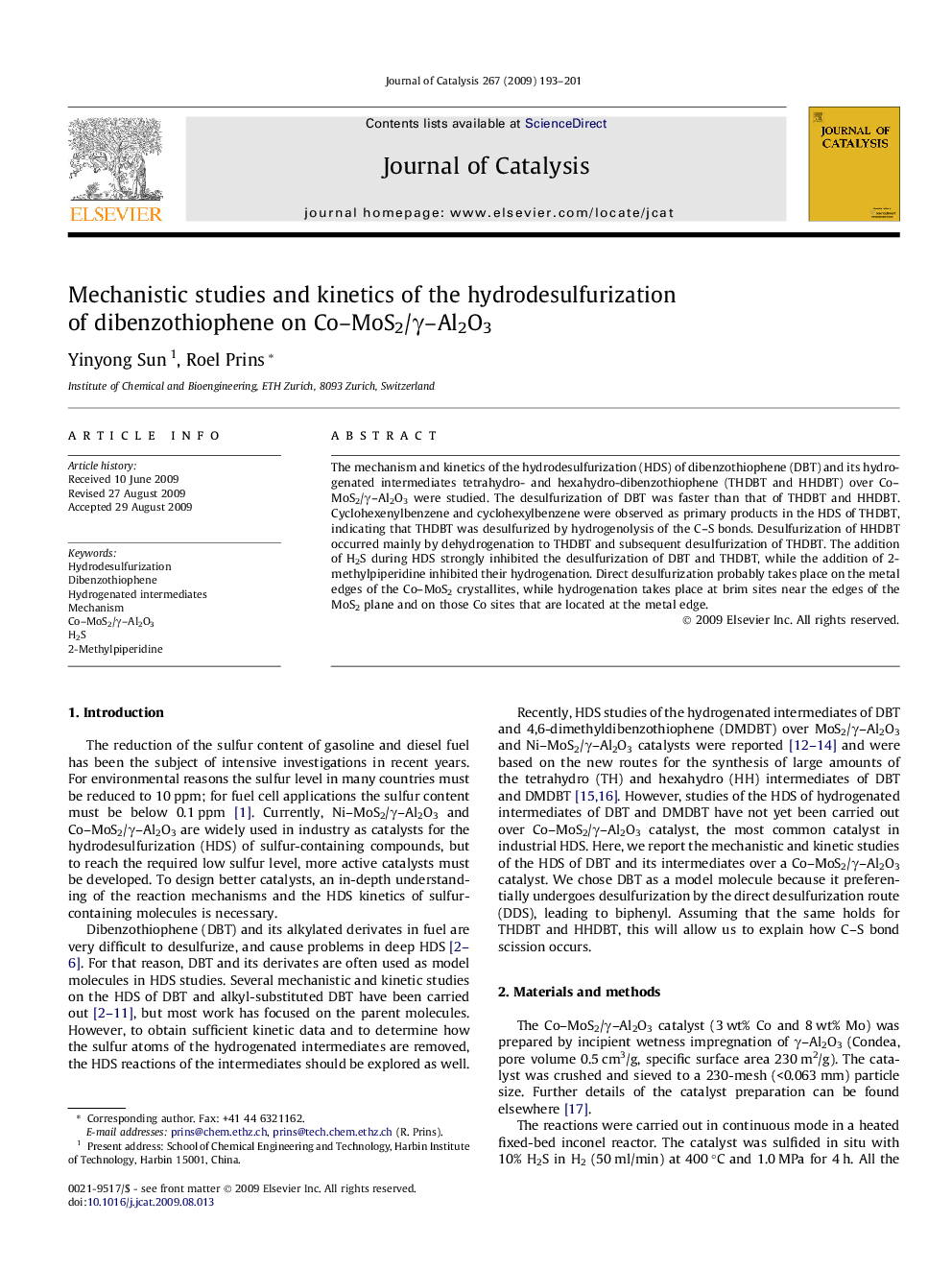| Article ID | Journal | Published Year | Pages | File Type |
|---|---|---|---|---|
| 62045 | Journal of Catalysis | 2009 | 9 Pages |
The mechanism and kinetics of the hydrodesulfurization (HDS) of dibenzothiophene (DBT) and its hydrogenated intermediates tetrahydro- and hexahydro-dibenzothiophene (THDBT and HHDBT) over Co–MoS2/γ–Al2O3 were studied. The desulfurization of DBT was faster than that of THDBT and HHDBT. Cyclohexenylbenzene and cyclohexylbenzene were observed as primary products in the HDS of THDBT, indicating that THDBT was desulfurized by hydrogenolysis of the C–S bonds. Desulfurization of HHDBT occurred mainly by dehydrogenation to THDBT and subsequent desulfurization of THDBT. The addition of H2S during HDS strongly inhibited the desulfurization of DBT and THDBT, while the addition of 2-methylpiperidine inhibited their hydrogenation. Direct desulfurization probably takes place on the metal edges of the Co–MoS2 crystallites, while hydrogenation takes place at brim sites near the edges of the MoS2 plane and on those Co sites that are located at the metal edge.
Graphical abstractThe desulfurization of DBT over Co–MoS2/γ–Al2O3 is faster than that of tetrahydro-DBT and hexahydro-DBT. Desulfurization of DBT and tetrahydro-DBT occurs directly by hydrogenolysis, while hexahydro-DBT mainly desulfurizes indirectly by first dehydrogenation to tetrahydro-DBT.Figure optionsDownload full-size imageDownload high-quality image (100 K)Download as PowerPoint slide
